Walt Disney Animation Studios (hereafter: WDAS) are both famous and infamous for their individualized anthropomorphic animal characters, such as Mickey Mouse, Simba, and Baloo. Unsurprisingly, dogs are depicted in more WDAS films than any other animal species. Yet, perhaps surprisingly, the species that comes second is horses. They feature in thirty-one WDAS films from 1937-2016, making them the most commonly-depicted species after dogs. However, unlike dogs, WDAS’ horses are often non-anthropomorphised, nameless, genderless, and without individual personalities. This lack of detail is questionable, given that WDAS are known for their anthropomorphic animal characters.
Despite being WDAS’ second most commonly-depicted species, horses have never been the protagonist or antagonist of any WDAS film. They mostly exist as background characters that provide transportation for human characters. Since many WDAS films are set in the past, the inclusion of horses is necessary for historical context and realism. Because of this, WDAS’ horses usually exist alongside a human character. Yet, unlike WDAS’ pets, horses do not usually have personalities that suit the human character they are associated with. For example, in Cinderella (1950), the evil stepmother has a villainous pet cat that takes pleasure in antagonizing Cinderella alongside his owner. However, human villains rarely have antagonistic horses and so forth. This demonstrates that horses are characterized with far less personality than many of WDAS’ other species, such as dogs and cats. It is also notable that horses are usually alongside males and rarely seem to exist alongside female characters. This is because female characters tend to have a pet rather than a horse.
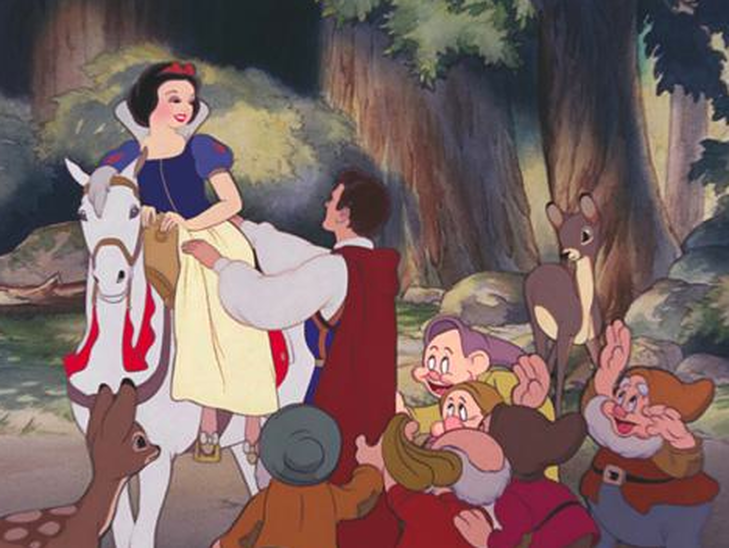
Because of their lack of characterization, it seems that horses are depicted as objects rather than sentient individual characters in WDAS films. Very few WDAS’ horses are ascribed names or genders. The lack of gender is notable because WDAS films are infamous for their reliance and reinforcement of gender stereotypes, even with animal characters. To be optimistic, WDAS’ lack of gender stereotypes with horses could be seen as progressive rather than unfair. However, given that gender is a significant part of the personality of many WDAS’ animal characters, it seems more likely that this lack of gender is because these characters lack detail. Thus, their lack of gender does not liberate them, it objectifies them.
Lady and the Tramp (1955) offers a strong example of the speciesism WDAS exhibit towards horses. During the film’s production, the dog characters were animated directly from live dogs. However, there is no evidence that the various horse characters were animated from live horses. This speciesism is then reinforced in the film’s narrative. For example, during the birth of Darling’s baby, a horse is shown waiting outside in the rain. The horse is non-anthropomorphised and barely animated, suggesting that it is an object, not an animal.
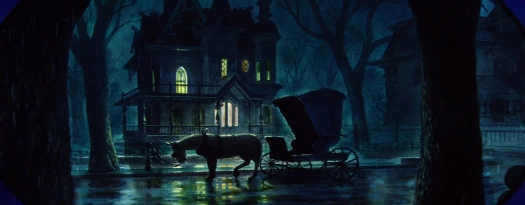
During the film’s climax, Trusty (the Bloodhound dog) is seriously injured after being hit by the dog-catcher’s horse-pulled cart. This happens after Trusty and Jock (the Scottish Terrier) intentionally frighten the horses to stop the dog-catcher’s cart. Yet, even though this accident is the fault of the dogs, the narrative encourages much sympathy for Trusty rather than the innocent horses.
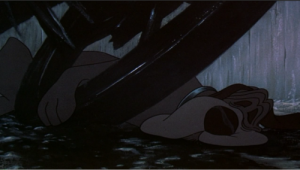
Trusty lies lifelessly as the other characters watch solemnly (figure 3). Jock howls with sadness next to Trusty’s body. In contrast, the narrative encourages no sympathy for the non-anthropomorphised horses, which are barely shown after the accident, even though they were clearly distressed.
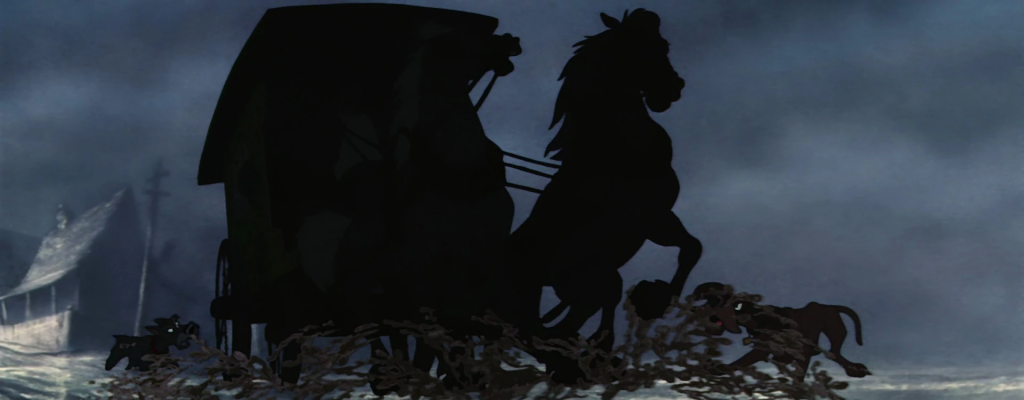
After this dramatic scene, the horses are never seen or mentioned again. However, Trusty is shown in the film’s final scene with a bandaged leg. Many WDAS films are sympathetic to the routine discrimination that animals face. For example, Bambi (1948) challenges the ethics of hunting and Lady and the Tramp criticizes dog pounds. However, it could not be said that WDAS are sympathetic to the mistreatment that horses experience. In Lady and the Tramp, a narrative pause is offered to Trusty, but not to the horses he intentionally startled. The lack of pause for the pain of horses suggests that they do not feel pain, which objectifies them. In Lady and the Tramp, the horses only exist to provide transport. Thus, they are objectified, which is reflected in their characterization. In contrast, the film celebrates the sentience and individuality of dogs. Therefore, Lady and the Tramp is speciesist towards horses. This speciesism towards horses is also evident in Snow White and the Seven Dwarfs (1937), The Little Mermaid (1989), and The Princess and the Frog (2009), amongst others.
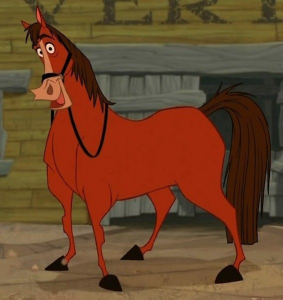
Some of the more recent WDAS films have given horses more characterization. For example, 2004’s Home on the Range and 2010’s Tangled both feature gendered, named, and individualized horses.
Buck is even able to speak, which is common for WDAS’ animal characters, but very rare for WDAS’ horse characters. Therefore, it seems that WDAS may be starting to give horses the same standard of characterization as their other species. Although whether this is good, bad, or even necessary, remains to be seen.
Despite the prevalence of horses in WDAS films, they are not known for their horses. This is because WDAS are speciesist with their animal characters. Horses are mostly depicted when necessary to the plot, and they are rarely offered the same amount of detail or characterization as dogs, cats, and many other species. WDAS’ horses are often nameless, genderless, and non-anthropomorphised. Thus, what they are instead is objectified.
Rebecca Rose Stanton is a 3rd year PhD student at Northumbria University, UK. Her thesis explores depictions of animal abuse in Walt Disney Animation Studios Films. She is the chair of the “Animals and Animation” SAS SIG. Rebecca is an associate fellow at the Oxford Centre for Animal Ethics. She is also part of the Vegan Society’s Researcher Network and Campaigner Network.

Hi Rebecca, do you by any chance have the source for the ranking of animals most depicted in WDAS movies? I’m looking for a top ten of that. Would be great if you could point me in the right direction. Thanks